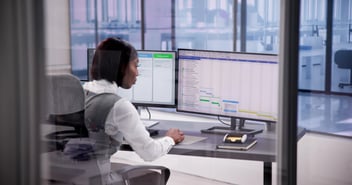From Reactive to Proactive: Shifting Gears in Construction Project Management
In the fast-paced, dynamic world of construction, project management is like the rudder of a ship, guiding it safely through turbulent waters to reach its destination. For many years, the industry has relied on a reactive approach to manage their projects– waiting for issues to arise before addressing them. But this ‘firefighting’ model, akin to sailing without a compass, often leads to costly delays, budget overruns, and compromised quality.
However, a shift is happening – one that is transforming how construction projects are managed. It’s not news that waiting for storms to hit isn’t the most efficient or productive strategy. What’s different now are the sophisticated tools available to anticipate issues before they occur, plan effectively for risks, and navigate project complexities.
But the question is, how can this shift be achieved effectively?
Reactive vs. Proactive
In construction project management, a reactive approach is like playing a continuous game of catch-up. It’s a method where issues are dealt with as they arise, much like a game of whack-a-mole. Essentially, teams react to problems as they occur, rather than anticipating them and planning in advance – which is one of the main reasons why projects end up running late.
In many cases, this reactive strategy is not a conscious choice, but a response driven by lack of proper planning, inadequate risk assessment, or insufficient data to enable foresight. It’s an approach that often puts teams under constant pressure, dealing with one crisis after another, leaving them little time for strategic planning or foresight.
If a reactive approach is akin to putting out fires as they occur, a proactive approach in construction project management could be compared to fire-proofing the building in advance. Instead of scrambling to find solutions after the problem has occurred, the team is well-prepared and can implement preplanned measures to mitigate the impact. It empowers teams to work more efficiently and strategically, focusing on achieving project goals rather than constantly putting out fires.
However, shifting to a proactive approach is not without its challenges. It requires not just a change in mindset but also the right tools and strategies to enable effective forward planning and risk management. This is where technology, particularly Artificial Intelligence (AI), plays a crucial role.
The Catalyst for Change: Technology and AI
As we usher in the era of digital transformation, technology has become an indispensable ally in shifting from a reactive to a proactive approach in construction project management. The key lies in leveraging the right tools that can arm us with actionable insights, enable robust planning, and facilitate effective risk management. Central to this transformation is AI.
AI is revolutionizing how we approach project management in construction. It sifts through enormous amounts of data, identifies patterns, and uncovers insights that would be nearly impossible to detect manually. From predicting potential bottlenecks in the supply chain to estimating the impact of weather on project timelines, AI’s predictive capabilities bring a whole new dimension to proactive project management.
AI isn’t just about prediction, though. It’s also about collaboration and communication. AI-powered platforms can enable teams to share information seamlessly, ensuring everyone is on the same page and can respond swiftly to any changes or potential risks. It’s about creating a dynamic, agile project environment where data-driven decisions are made, and risks are proactively managed.
Remember, the adoption of AI doesn’t mean replacing human expertise. Rather, it’s about augmenting human capabilities with advanced technology, empowering project managers to anticipate, plan, and execute construction projects more effectively and efficiently. By acting as a catalyst for change, AI is paving the way for a more proactive and successful future in construction project management.
Key Considerations for Shifting Gears
Transitioning from a reactive to a proactive approach in construction project management is not an overnight process. It requires careful planning, strategic thinking, and most importantly, the right tools. Here are a few considerations to keep in mind as you make this shift:
1. Change in Mindset: Shifting gears begins with a change in mindset. Embrace the idea that anticipating and planning for potential risks is more efficient and effective than merely reacting to them when they occur.
2. Training and Upskilling: Embracing new technologies like AI requires a certain level of technical proficiency. It’s important to invest in training and upskilling your team to effectively leverage these tools for proactive project management.
3. Choosing the Right Tools: Not all tools are created equal. Choose a solution that not only enables proactive project management but also aligns with your specific project needs. Tools that provide real-time data, predictive analytics, and facilitate collaboration should be at the top of your list.
4. Data Quality: Proactive management relies heavily on the quality of your data. Ensure that you have processes in place to collect, clean, and manage high-quality data that your AI tools can effectively analyze.
5. Iterative Approach: Transitioning to a new approach takes time. Start with small changes and gradually increase your proactive management practices as your team gets more comfortable with the new process.
By keeping these considerations in mind, you can set the stage for a successful transition to proactive project management, turning potential project hurdles into stepping stones for success.
Proactive Construction Project Management in Action
Curious about what this looks like in practice? For a real-world example that illustrates the tangible benefits of proactive project management powered by AI, take a look at our case study about RailCo. Or, for an understanding of how Foresight can help your project, book a call with one of our experts.



